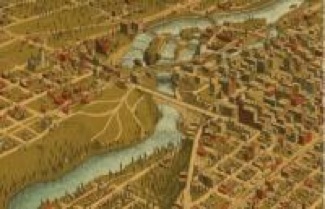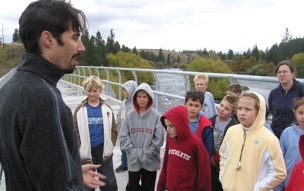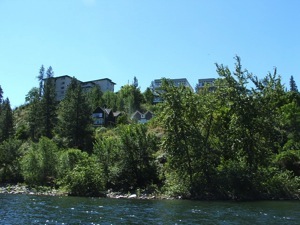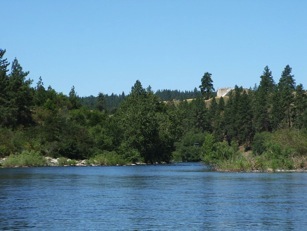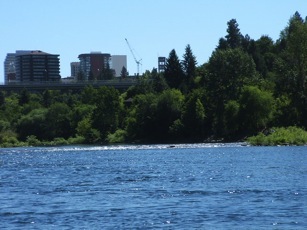1913 Olmsted Brothers’ Report

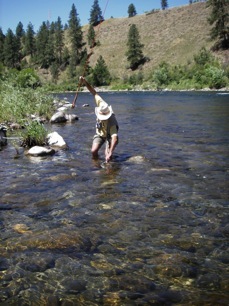
Spokane’s Great Gorge
The Olmsted’s were especially enthusiastic about the Gorge Park:
"Nothing is so firmly impressed on the mind of the visitor to Spokane, as regards its appearance, as the great gorge into which the river falls near the center of the city. It is a tremendous feature of the landscape and one which is rarer in a large city than river, lake, bay or mountain. Any city should prize and preserve its great landscape features, inasmuch as they give it individuality. Chicago has spent millions for its Lake Shore parks. New York has spent more millions on its great Riverside Park and Drive extending for many miles along the Hudson River. Many instances could be enumerated showing that the wisdom of preserving such landscape features has been recognized and acted upon by making them enjoyably accessible by laying out parks and parkways along them.”
Priority: protect four large parks
In 1907, the newly created Spokane Park Board hired the nation's premier landscape architects, the Olmsted Brothers, to prepare a detailed, written report with accompanying maps completed in 1908 and published in 1913 by the Board of Park Commissioners. The Olmsted Report proposed parks and connecting boulevards. The significance of the Olmsted report on guiding major land use decisions in Spokane cannot be underestimated.
The Olmsted Report evaluated existing parks and identified areas that should be set aside for new ones. The Olmsteds gave their highest priority to protect four large parks, including Gorge Park:
“We therefore deem it our first duty to urge your Board to secure the land for several large parks as soon as may be, so that the existing opportunities for preserving beautiful natural landscape, conveniently accessible by the mass of the people, may not be lost by the spread of subdivisions and city improvements.”
The Olmsted Brothers & Spokane
“No other professionals surpass the Olmsted firm in its recognition of how to deal with landscape amenities in a municipal setting. They understood landscape system and city design from social, aesthetic, economic and environmental standpoints. John Olmsted found Spokane's geography and topography particularly appealing and you can find that in the opening of his report. He understood fully that once there is a commitment to development that land is lost as a public resource. I don't believe Spokane can afford to lose any more of this exceptional asset to inappropriate development.”
Keep trying to instill the kind of vision Aubrey White, John Duncan and John Olmsted and his associate in Spokane, James Dawson, had!
~ Sally Reynolds, Historic Preservation Consultant
(see also “The Olmsted Brothers Landscape Architectural Firm”)
Protect the Gorge’s north side
Regarding the side proposed for the Kendall Yards Development, the Olmsted’s wrote,
“The whole north slope is exceedingly conspicuous to a great many people, and its preservation as a beauty spot would certainly be widely appreciated. … On the right bank the boundary should be on the top of the bluff, to include a boundary road, which, however, would be adjust to the railroad about to be built there, … It is proposed to extend this park along the right bank of the river to the street railway amusement resort called “Natatorium Park” and along the left bank of the river to Fort Wright, U.S. Military Reservation.”
Protect the views of the River
The Olmsteds advocated acquiring control of land to protect the scenic views of the river noting, that
“as the city grows in density of population, even the smallest areas … will afford extremely valuable places where the people can go to enjoy the view of the river. … Far too often valuable opportunities of that sort have been permitted to be lost by cities on rivers or other waters.”
Restrict residential building heights to 3-4 stories
The Olmsted recommended Spokane restrict building height in residential areas to three or four stories:
“In residence districts a restriction to four stories in height for buildings with brick or stone outer walls and three stories for those with outer walls of wood, can probably be passed now and will later prove decidedly beneficial.”
Preserve the beauty and grandeur
The Olmsted formed the basis for much of Spokane's development for decades to follow. Although much of the falls and gorge area had already been claimed by industrial and residential uses, the Olmsteds urged the city to preserve "what beauty and grandeur remains of its great river gorge," and provided an outline of what might occur if the opportunity for such a park ever arose.

